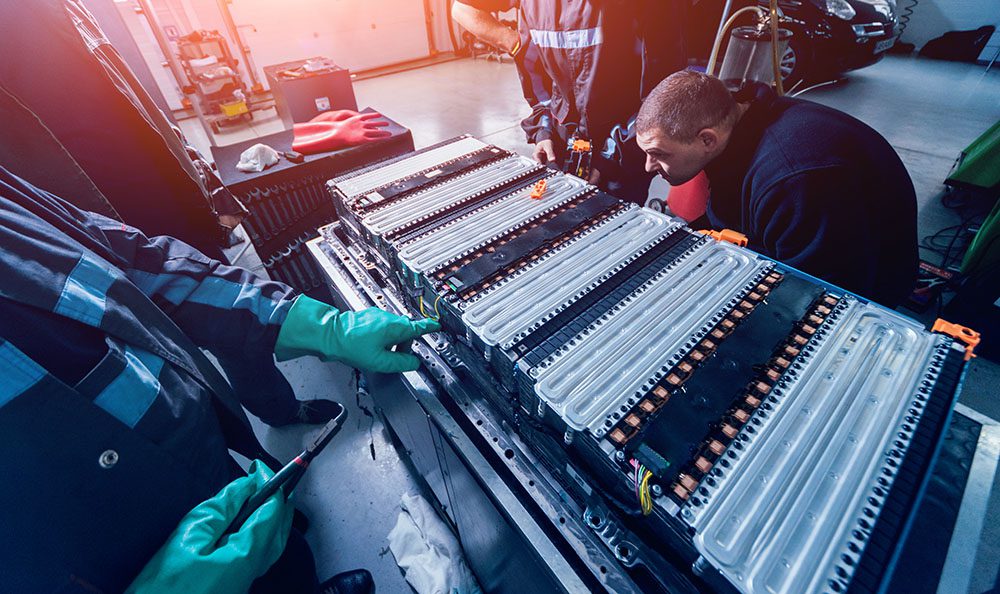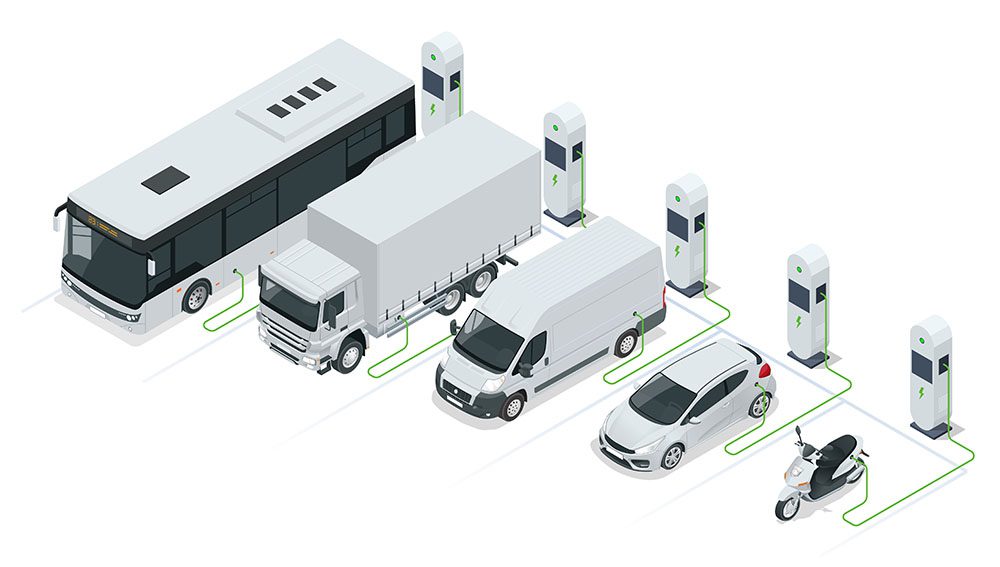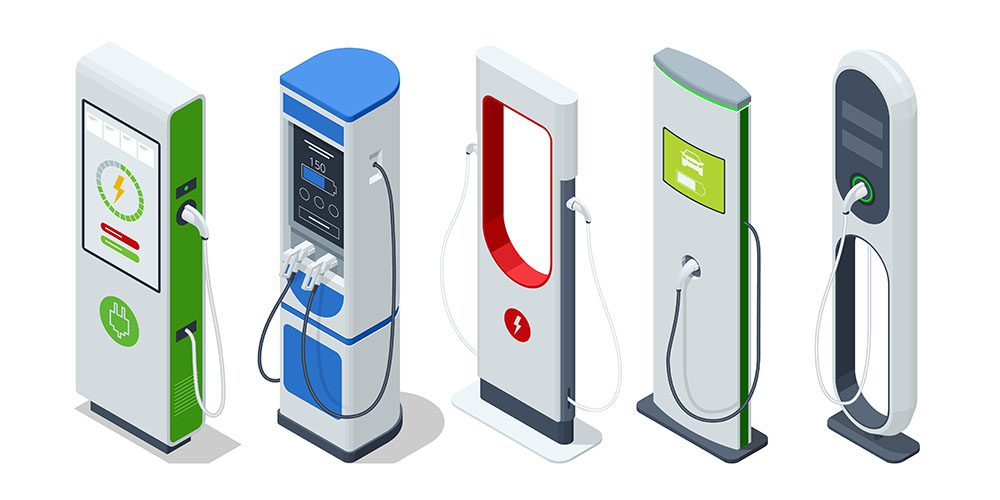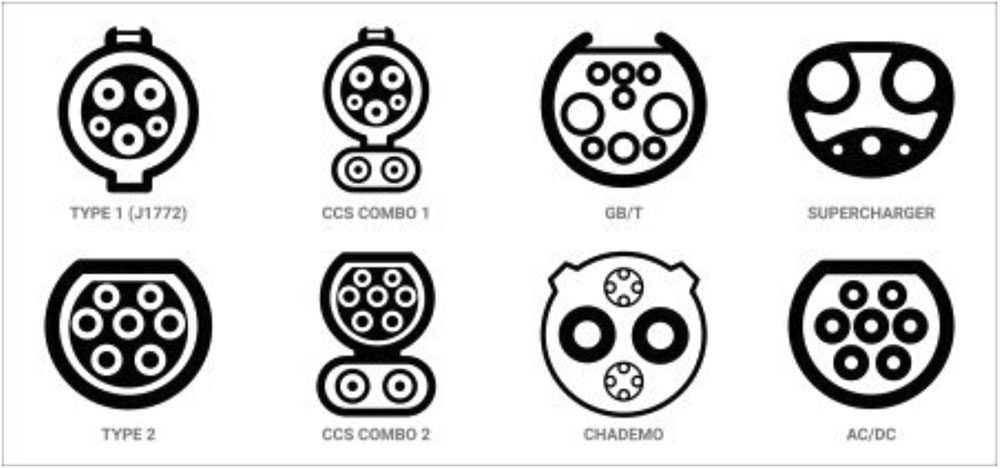
EVSE, or Electric Vehicle Supply Equipment, transfers electrical power from a power source to an electric vehicle. These devices can come in many different forms, such as charging stations, EV chargers, and charging points, but they all function under that basic principle.
EVSEs today can differ depending on many factors such as power, brand, and age. With these factors varying between different cars, equipment and test standards have been standardized to ensure that EVSEs can charge any electric vehicle safely and efficiently. In this blog, we’ll explore more about EVSE test equipment and what test standards they must follow.

How EV Chargers Operate
EV Chargers operate using alternating current (AC) and direct current (DC) voltage. For a small breakdown of the types of chargers, here are the three levels of chargers and what they are typically associated with:
- AC Level 1 Charging – Level 1 EVSE chargers offer approximately 5 miles of range per 1 hour of charging (assuming 1.9 kW charging power). These chargers rely on the single-phase 120 V outlets that you would find in a typical household.
- AC Level 2 Charging – Level 2 EVSE chargers offer approximately 25 miles of range per 1 hour of charging (which equates to anywhere between 2.9 and 19.2 kW of power output). These chargers are the most common, providing 208-240 VAC which is typically found in most residential and commercial spaces. This type of charger can use two types of connectors, SAE J1772 and NACS (North American Charging Standard).
- DC Fast Charging – DC EVSE chargers offer approximately 100 – 200 miles of range per 30 minutes of charging (with up to 500 kW depending on vehicle and battery state of charge). This level requires higher voltages and 3-phase power, meaning that it is only available in commercial and industrial settings. For DC fast charging, they no longer use the SAE J1772 connector, instead opting for either CSS, CHAdeMO or NACS charger types.

The reason AC chargers are used for lower power charging and DC chargers are used for higher power charging is how EVs store energy. For context, electric vehicles can only store DC power. When a charging station transfers AC power into an electric vehicle, the change from AC to DC occurs within the vehicle. The vehicle is capable of changing AC to DC power; however, it can only do so at limited rates.
DC charging stations bypass this by converting AC power to DC power inside the EVSE. Since the car’s battery can only store DC power, a DC charging station is essentially providing power directly to the battery. With AC charging stations, an extra step is required inside the car to filter the AC power into DC before it can be transferred to the car battery for use.
What is the Purpose of EVSEs?
This may be a lot to process, but knowing how EV chargers operate highlights what EVSE test equipment does. These tools simulate an EV’s interaction with the charger, verifying that everything functions correctly and safely.
These devices ensure that every aspect of the charger works as intended. EVSE testing equipment makes sure the charging station power output is correct, the connector type matches and functions properly with the device under test (DUT), and the communication between the EVSE and the DUT is consistent, among other issues.

Test equipment must also account for brand and model variations, ensuring reliable performance whether charging a decade-old Tesla or a new Rivian. This helps prevent safety hazards, inefficiencies, or compatibility problems in real-world use.
Test Standards Used in EVSE Testing
To ensure EVSE test equipment functions properly under these conditions, there are dozens of test standards put in place to ensure everything is standardized. We will briefly cover some of these standards and what they mean below.

General Standards Related to EV Charging
- IEC 61851-1: EV conductive charging systems’ general requirements.
- IEC 61851-21: Sets the requirements for vehicle types and communication safety.
- IEC 61851-22: Defines the EV requirements for an AC/DC supply’s conductive connection to the EVSE.
- IEC 61851-23: Defines the EV requirements specifically for a DC supply’s conductive connection to the EVSE.
- IEC 61851-24: Sets requirements for control communication that occurs between the DC EVSE and an EV.
EV Charging Standards Related to Connectors
- IEC 62196-1: Standardizes the charging plugs and vehicle inlets.
- IEC 62196-2: Offers more specific details regarding the plugs, socket-outlets, vehicle connectors, and vehicle inlets.
- IEC 62196-3: Provides requirements for the dimensional interchangeability of pin and contact-tube accessories.
- SAE J1772: This is a standard charging connector for electric vehicles, named after the SAE J1772 connector used for level 1 and 2 charging stations in North America.
- IEEE 1901: These are standards for high-speed communication devices via electric power lines.
- SAE J3400: North American Charging Standard (NACS)
- CHAdeMO 3.0 (ChaoJi): Standardized charger for electric vehicle manufacturers such as Nissan, Toyota, and Mitsubishi.
- Chaoji is a further iteration that offers compatible charging with GB/T and CHAdeMO.
EV Charging Standards Related to Power Quality
- IEEE 1547: Defines how power systems can safely interconnect distributed resources
- SAE J2894: Defines Plug-In Electric Vehicles’ power quality requirements
- IEC 61000-3-2: Provides limits for the electrical equipment’s harmonic current emissions.
- SAE J2380: Sets the standard of testing procedures for vibration durability in EV batteries.
Interoperability
- ISO/IEC 15118: This outlines the protocol for communication between a charging station and the EV being charged.
- CHAdeMO/ChaoJi: (Repeated from connectors section)
- IEEE 1547: (Repeated from Power Quality Section)
- SAE J1772: (Repeated from connectors section)
- MCS (Megawatt Charging System): This standard is for charging power levels exceeding 1 megawatt, which is designed to support large EVs, such as trucks and buses.
How ATEC Can Help You
ATEC provides a variety of EVSE test equipment rentals to meet your testing needs. ATEC rents products from leading manufacturers such as Keysight and Tesco.
Keysight SL1215A Scienlab Regenerative AC / Grid Simulator | 130 / 65 A, 90 kW / 135 kVA
Keysight SL1047A EV Charger Tester
Keysight SL1040A EVSE Charger Tester | 400 kW
Fluke FEV100 Electric Vehicle Charging Station Tester
Reach out to ATEC today to learn more about our extensive rental inventory.
from Charged EVs https://ift.tt/GCpji9R

.png?lang=en-US&height=166&width=250)
.png?lang=en-US&height=167&width=250)


No comments:
Post a Comment